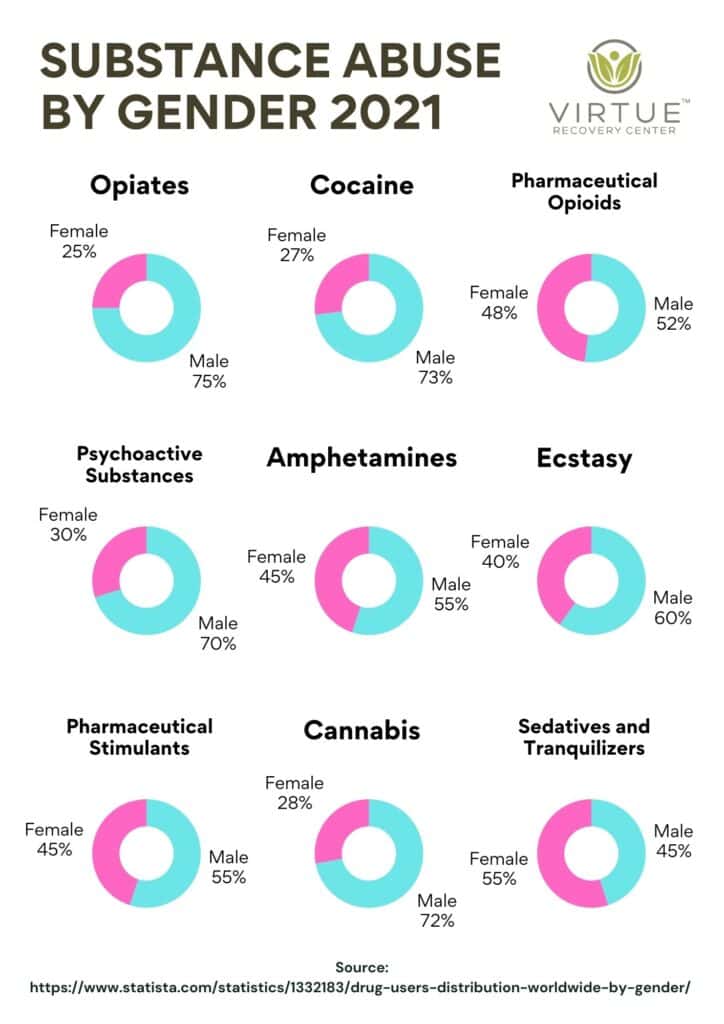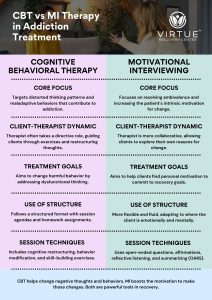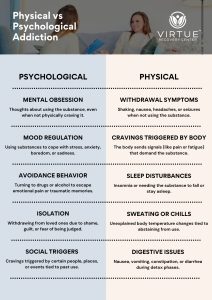Key Takeaways
- Men and women differ in substance use patterns and reasons for addiction.
- Treatment approaches can be more effective when tailored to gender-specific needs.
- Understanding these differences improves long-term recovery outcomes.
Introduction to Gender Differences with Substance Use Disorder
Addiction impacts people differently, and gender often plays a significant role in shaping those experiences. Men and women may turn to substances for various reasons and face unique challenges during their recovery journeys. These differences extend to the types of substances they use, how they develop dependence, and the treatment approaches that work best.
This article dives into the distinct patterns of substance use among men and women and highlights the importance of gender-specific treatment programs.
Substance Use Patterns by Gender
Men and women often use substances for different reasons. Men are more likely to use substances for recreation or performance enhancement. Social pressures and external stressors such as work or relationships often drive their behavior. Women, on the other hand, are more likely to use substances as a way to cope with emotional pain, trauma, or mental health conditions like anxiety or depression.
For example, research shows men are more prone to using substances like opiates, cannabis, and cocaine, while women are more likely to misuse sedatives or tranquilizers. These differences reflect varying societal expectations and coping mechanisms.
Biological differences also influence how substances affect men and women. Women’s bodies tend to metabolize substances differently, which can make them more susceptible to addiction over shorter periods, a phenomenon known as the “telescoping effect.”
Addiction Progression and Impact
Addiction progression varies between men and women due to factors like biology and mental health.
Women often develop addiction more rapidly, especially when using substances like alcohol or prescription drugs. Their addiction is frequently tied to emotional or psychological pain, making them more likely to experience co-occurring disorders such as depression or PTSD.
Men, while they may take longer to become addicted, often engage in riskier behaviors such as binge drinking or using multiple substances at once. These actions increase the likelihood of overdose or long-term health complications.
Despite these differences, both men and women suffer significant physical and mental health effects from addiction, underscoring the need for timely intervention and support.
Challenges in Substance Abuse Addiction Treatment
Both men and women face barriers to seeking and succeeding in treatment, but these barriers are often different in nature.
Women may delay treatment due to stigma or fear of judgment, mainly if they are mothers. Many also lack access to childcare, making it challenging to commit to residential programs. On the other hand, men are often hesitant to seek help due to societal expectations to remain stoic and self-reliant, which can lead to untreated addiction for extended periods.
Moreover, men are less likely to recognize the emotional aspects of addiction, focusing instead on physical symptoms. Women, in contrast, may prioritize emotional healing but struggle with guilt or shame, significantly if their addiction impacts their families.
Gender-Specific Substance Use Disorder Treatment Approaches
Recognizing these gender-based challenges, many treatment centers now offer specialized programs tailored to the unique needs of men and women.
For women, trauma-informed care is crucial. Many women with addiction histories have also experienced trauma, making it essential to address emotional wounds alongside substance use. Programs that include childcare support and promote open discussions about stigma are particularly effective.
Men benefit from structured, goal-oriented programs that build accountability and resilience. Peer support groups designed for men can foster camaraderie and provide a safe space to discuss challenges without fear of judgment. Behavioral therapies that tackle external pressures like work and relationships also help men stay on track.

Conclusion
Addiction is a complex condition that affects men and women differently, from the substances they use to the ways they seek help. By understanding these differences, we can develop better strategies for prevention and treatment. Whether you’re a man or a woman, tailored care can make all the difference in your recovery journey.
If you or someone you love is struggling with substance use, contact Virtue Recovery Las Vegas at 866-520-2861 to explore compassionate, personalized treatment options.
FAQs About Differences in Addiction Between Men and Women
What substances do men and women use most commonly?
Men are more likely to use substances like opiates, cannabis, and cocaine, while women are more prone to misuse sedatives and tranquilizers.
Why do women progress to addiction faster than men?
Women’s bodies metabolize substances differently, and emotional factors like trauma often play a significant role in rapid addiction progression.
How does treatment differ between men and women?
Treatment for women often emphasizes emotional healing and trauma recovery, while men benefit from structured programs and peer accountability.
Are gender-specific treatment programs effective?
Yes, these programs address unique challenges men and women face, increasing the likelihood of long-term recovery.
Where can I find help for substance use?
Contact Virtue Recovery Las Vegas at 866-520-2861 to learn more about tailored treatment options.
Resources
https://www.statista.com/statistics/1332183/drug-users-distribution-worldwide-by-gender/
https://www.sciencedirect.com/science/article/abs/pii/S0272735817302507













